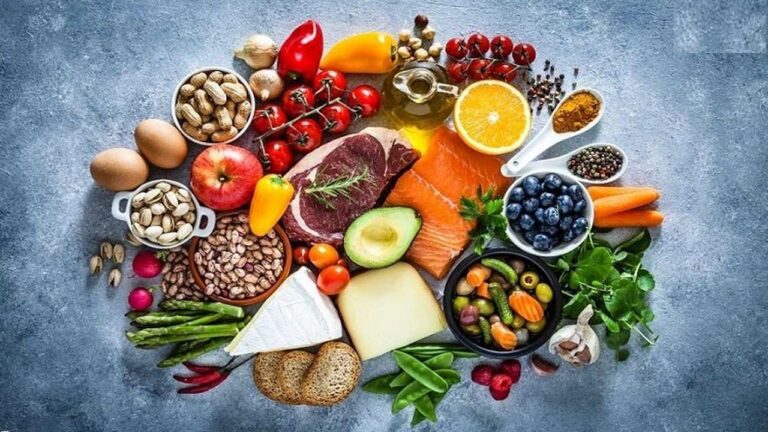Inflammation isn’t always a bad thing. When you get a cut or an infection, inflammation is a natural and healing response from your immune system. The problem begins when this defensive reaction doesn’t shut off, leading to a persistent, low-grade state known as chronic inflammation.
This type of inflammation is the silent culprit behind many modern health problems, from fatigue and joint pain to skin issues, heart disease, and digestive disorders.
The good news is that one of the most powerful tools to combat this hidden enemy is already in your kitchen: your fork. This article is your practical guide to using the power of food to reduce inflammation and improve your quality of life.
The Pillars of an Anti-Inflammatory Diet: What to Eat More Of
An anti-inflammatory diet is built on a foundation of whole, natural, nutrient-rich foods. Focus on adding more of these groups to your plate:
- Colorful Fruits and Vegetables: Aim to “eat the rainbow.” Berries, cherries, dark leafy greens (spinach, kale), and broccoli are packed with antioxidants that fight cellular damage.
- Fatty Fish: Fish like salmon, sardines, and mackerel are rich sources of omega-3 fatty acids, which have powerful anti-inflammatory effects.
- Healthy Fats: Extra virgin olive oil, avocados, and nuts (especially walnuts and almonds) are excellent sources of monounsaturated fats.
- Legumes and Whole Grains: Beans, lentils, oats, and quinoa are high in fiber, which supports gut health and helps reduce inflammation.
- Spices and Herbs: Add turmeric (containing curcumin), ginger, garlic, and green tea to your daily routine.

Inflammatory Foods: What to Limit or Avoid
Just as important as adding good foods is limiting those that fuel the fire of inflammation:
 Also Read:
Ending the All-or-Nothing Cycle: How to Get Back on Track...
Also Read:
Ending the All-or-Nothing Cycle: How to Get Back on Track...
- Sugar and High-Fructose Corn Syrup: Found in sodas, processed fruit juices, pastries, and candy.
- Refined Carbohydrates: White bread, white pasta, white rice, and many breakfast cereals.
- Unhealthy Fats: Processed vegetable oils (soybean, corn), margarine, and anything containing “trans fats” (common in fried foods and fast food).
- Processed Meats: Sausages, hot dogs, and bacon.
How to Find Your Personal Inflammatory Triggers
The lists above are excellent guidelines, but everyone’s biology is unique. Some people may have sensitivities to foods like dairy, gluten, or nightshades, which don’t cause issues for others. So how can you figure out what foods might be a problem for you?
The answer is to become a detective for your own body through tracking.
This is where Limotein becomes your personal investigation tool:
- Step 1: Log Everything You Eat. Use Limotein’s easy voice and photo logging to create an accurate record of your meals and snacks.
- Step 2: Note Your Symptoms. Alongside Limotein, use a simple notebook or a notes app. Each day, rate your symptoms (e.g., Joint Pain: 4/10, Bloating: 6/10, Energy Level: 5/10).
- Step 3: Connect the Dots. After a week or two, compare your Limotein food log with your symptom log. Do you see a pattern? Did your joint pain flare up on days you ate more dairy? Did your skin clear up on days you avoided sugar? Limotein provides the objective, time-stamped food data you need to discover these powerful correlations.
Conclusion: Make a Choice for Health with Every Meal
You have the power to reduce inflammation and feel better, and that power starts with your daily choices. This is a journey of discovering your body’s language, not a strict, overnight diet.
Ready to take control of inflammation? Start your journey of discovery today. Use Limotein’s free trial to track your food, identify your triggers, and build a powerful anti-inflammatory lifestyle, one bite at a time.




